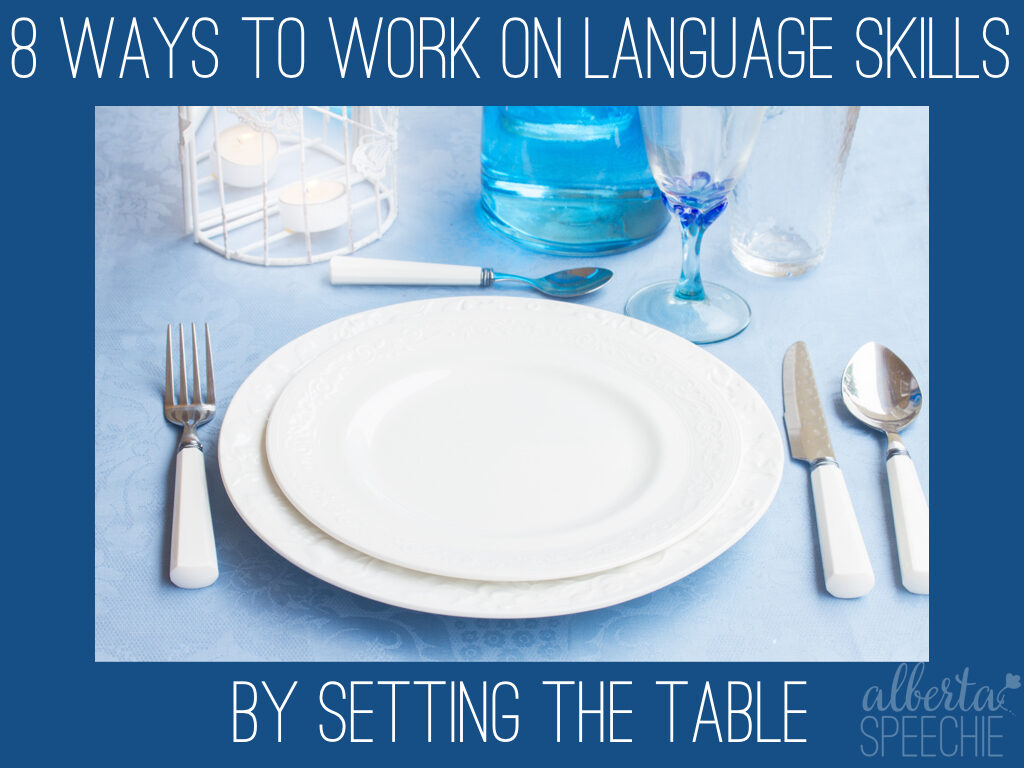IMPORTANT: IF YOU ARE USING DISHES THAT ARE BREAKABLE, YOUR CHILD WILL NEED TO BE HIGHLY SUPERVISED.
1. Following Directions: Help your child by telling him/her the steps to set the table. E.g. “take out the blue placemats then get out the big plates.” Mix it up and have them set the table in different ways. Change the position of the fork, spoon etc.. or make it a more formal setting or less (different arrangements are included on the following page).
2. Sequencing: Talk about the steps of setting the table and do it with your child a few times. Then mix up the sequence and see if your child recognizes that you did it out of sequence. Talk about or have your child talk about why it was out of sequence and what step should happen next. Take pictures of the steps and have them out to help your child. Once they are more comfortable, mix up the pictures and then have him/her put them in the right order. To help their expressive language skills have them tell you back the steps.
3. Big & Little: Tell your child to take out the big and little plates, bowls, cutlery. If (s)he gets it wrong then pull out both (e.g. big and little plate) and show them the difference then have them try again.
4. Beside, Next to, Between, Top, Above, Below: Use these words when telling your child where to put the different items when setting the table. E.g. Put the spoon beside the knife or put the fork below the glass.
5. Left & Right: more location words to use when helping your child set the table.
6. Counting one to one correspondence: a saying cropped up at work that every is math. Math and language skills are closely tied together. Helping your child get out four forks, knives etc.. then putting one at each placemat is important for math and for developing language skills.
7. Planning and problem solving: show your child a picture of how you want the table set and then let them figure out how to do it. Provide help (if needed) but be careful not to tell them what to do. Ask questions like what do you think you need to do first or next? Remember: how you would do it may be in a very different order than your child may do it. As long as the end product matches the goal and no dishes have been damaged then it has been successful.
8. Further expand their vocabulary: use words such as cutlery, mugs, cups, glasses, and fragile. When using these words add in the words that they may already know the meaning. E.g. Be careful, those plates are fragile, they might break or get out the cutlery, those are the knives, forks and spoons.
For a handout version of this post click here.

